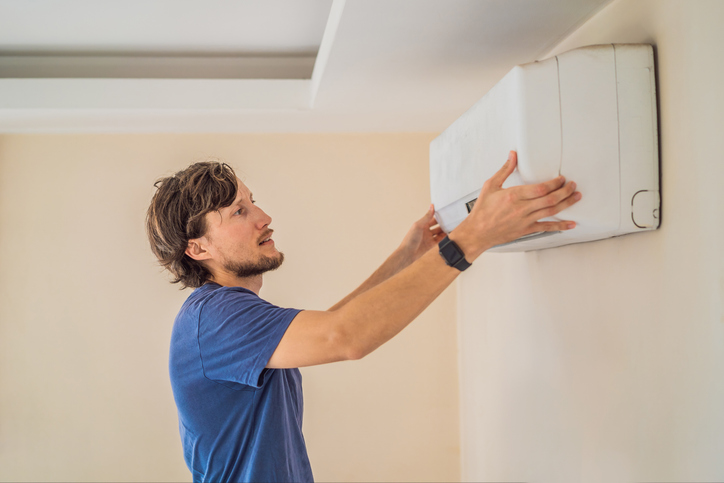Introduction
Your air conditioning system does more than just cool your home—it also plays a critical role in controlling humidity and air quality. When left unchecked, ductwork can become a breeding ground for mold and mildew due to trapped moisture, stagnant air, and dust buildup. Regular air conditioning service is essential to prevent these problems from taking root in your HVAC system. With timely inspections, cleanings, and maintenance, homeowners can protect both their indoor air and their investment in home comfort. Let’s break down how professional AC servicing helps keep your ductwork mold-free and functioning at its best.
AC Service Plays a Key Role in Ductwork Mold Prevention
1. Moisture Control Begins with Proper AC Function
One of the biggest contributors to mold growth in ductwork is excess moisture. Your AC system naturally removes humidity from the air during the cooling process. However, if the coils are dirty, the drainage system is clogged, or airflow is restricted, that moisture can linger in the system and enter your ducts. Scheduled servicing ensures your AC is operating efficiently and draining properly, limiting the moisture available for mold to thrive.
2. Regular Filter Changes Reduce Organic Buildup
Dust, pollen, and pet dander can serve as food sources for mold and mildew. When filters are clogged or outdated, these contaminants accumulate in your ducts and create an ideal environment for fungal growth. During an air conditioning service, technicians replace or clean filters as part of their routine checklist. This not only protects your system but also ensures that fewer organic particles circulate through your home, reducing mold risk significantly.
3. Cleaning Evaporator Coils Prevents Mold Spread
Evaporator coils are prime spots for condensation buildup. When they’re dirty, the moisture that collects on them doesn’t drain properly, encouraging mold growth right on the coil surface. Worse, these mold spores can then travel through the duct system. Professional AC service includes coil inspection and cleaning to eliminate these early signs of microbial buildup. This step is crucial to stopping the spread before it becomes a bigger issue.
4. Improved Airflow Discourages Stagnant Zones
Stagnant air pockets within ductwork are ideal breeding grounds for mildew and mold. Proper airflow keeps temperatures balanced and discourages pockets of warm, moist air from forming. A skilled technician performing air conditioning service will assess your system’s airflow, adjust fan speeds if needed, and check for blocked vents or closed dampers. Keeping air moving steadily is one of the simplest ways to reduce microbial threats in your ducts.
5. Duct Inspections Catch Issues Early
Many homeowners don’t realize they have mold in their ductwork until a musty odor appears or allergy symptoms worsen. Routine servicing includes inspecting ductwork for signs of leaks, moisture buildup, or mold deposits. Catching these problems early means less cleanup, less expense, and fewer health risks. Technicians can recommend sealing or repairing any compromised ducts as part of their maintenance plan.
6. Drain Line Cleaning Prevents Overflow
Your AC unit has a condensate drain line that removes water produced during the cooling cycle. If this line gets clogged with algae or debris, water can back up into the unit and eventually seep into the ductwork. Part of a standard AC service involves flushing the drain line to ensure proper drainage. This proactive step eliminates a common cause of water leaks and mold formation in and around ducts.
7. Thermostat Calibration Keeps Humidity in Check
Sometimes, the problem isn’t with the ducts—it’s with the temperature settings themselves. If your thermostat isn’t properly calibrated, your system may not run long enough to dehumidify the air, or it may cycle too often, creating temperature swings. Both scenarios can lead to uneven moisture distribution. A technician can recalibrate your thermostat during service to maintain optimal indoor humidity levels and reduce mold risk.
8. Cleaner Ducts Mean Healthier Living Conditions
Ultimately, maintaining clean ductwork with routine AC care helps create a healthier home. Mold spores, once circulated through the air, can cause headaches, asthma flare-ups, skin irritation, and more. By scheduling regular service, you’re not only protecting your equipment, you’re protecting your family. Cleaner air reduces symptoms and boosts overall comfort, especially for those with allergies or respiratory sensitivities.
Mold and mildew in your ductwork don’t just threaten your HVAC system—they threaten your home’s air quality and your health. Fortunately, the solution is simple: consistent AC Service. From managing humidity and airflow to cleaning key components and inspecting for early warning signs, routine servicing keeps your ducts clean and your home safer. Ignoring mold risks today could lead to major repairs and health concerns tomorrow. Stay ahead of the problem with a maintenance strategy designed to eliminate hidden hazards and extend your system’s life.
Conclusion
Prevent mold in your ducts today—call Global Cooling at (830) 992-7887 for expert AC service that protects your air and your home.
📌 Trust Global Cooling for reliable, high-quality plumbing, heating, and air conditioning services — delivered fast, with friendly, local care.
Trusted AC Solutions for Every Season.
- How Air Conditioning Services Prevent Costly System Breakdowns
- Signs It’s Time for an AC Replacement: What Each Homeowner Should Know
- Top Signs You Need Commercial AC Maintenance Immediately

 SCHEDULE A SERVICE
SCHEDULE A SERVICE
